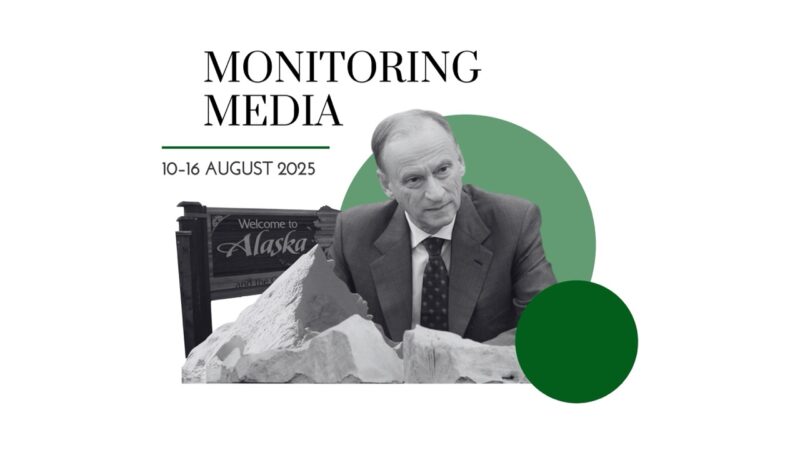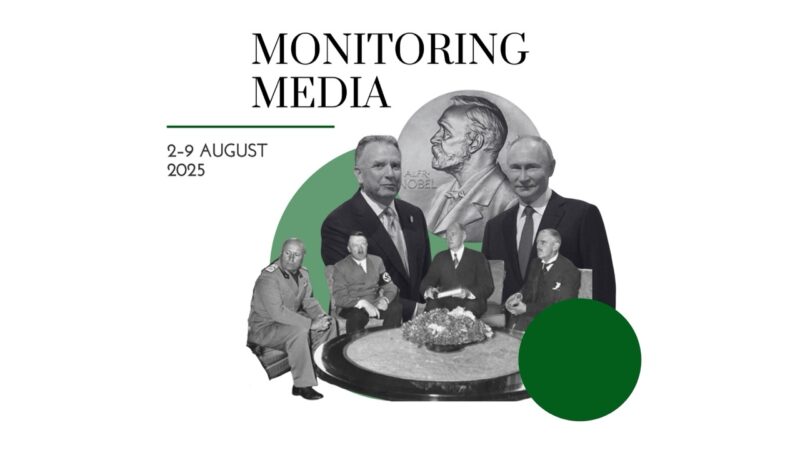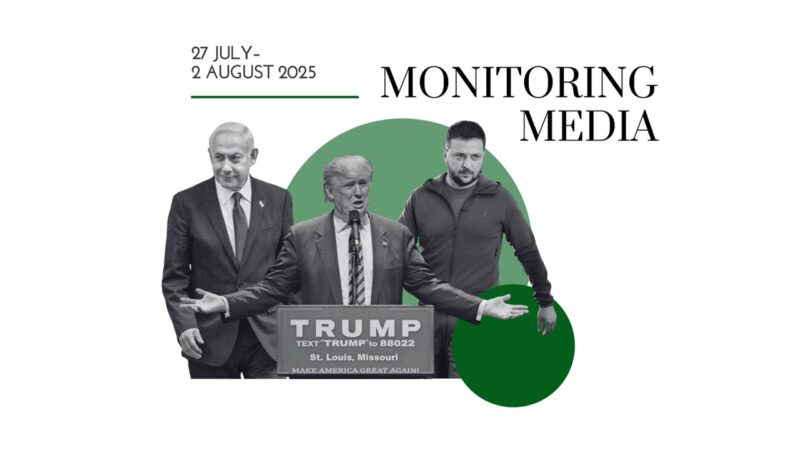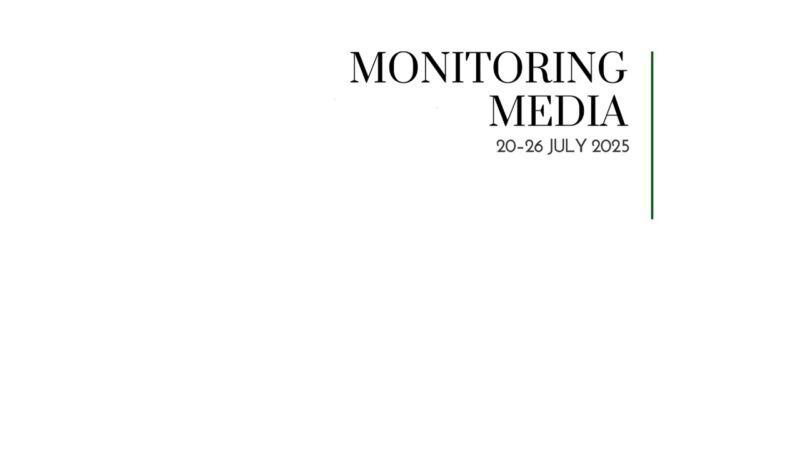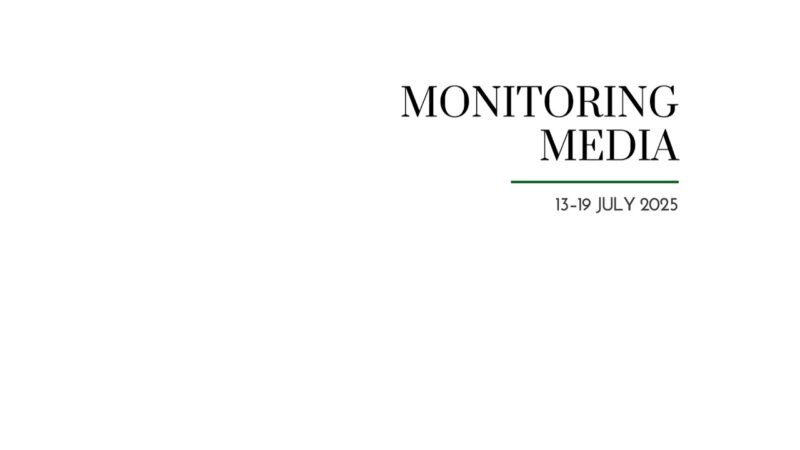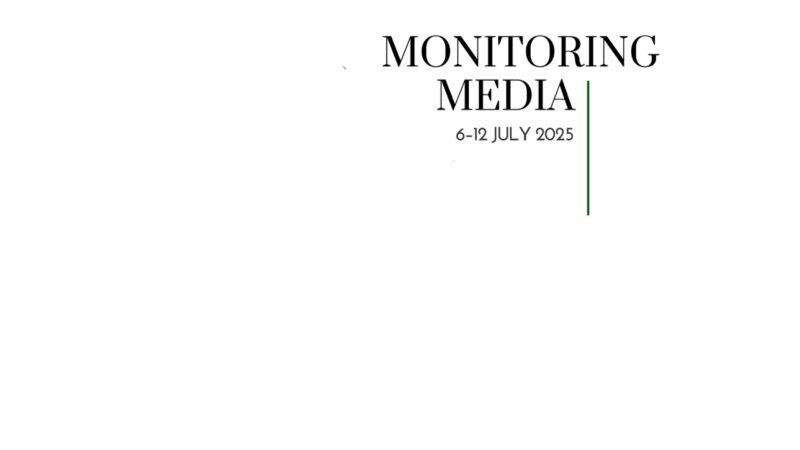Europe’s help to Ukraine strengthens itself
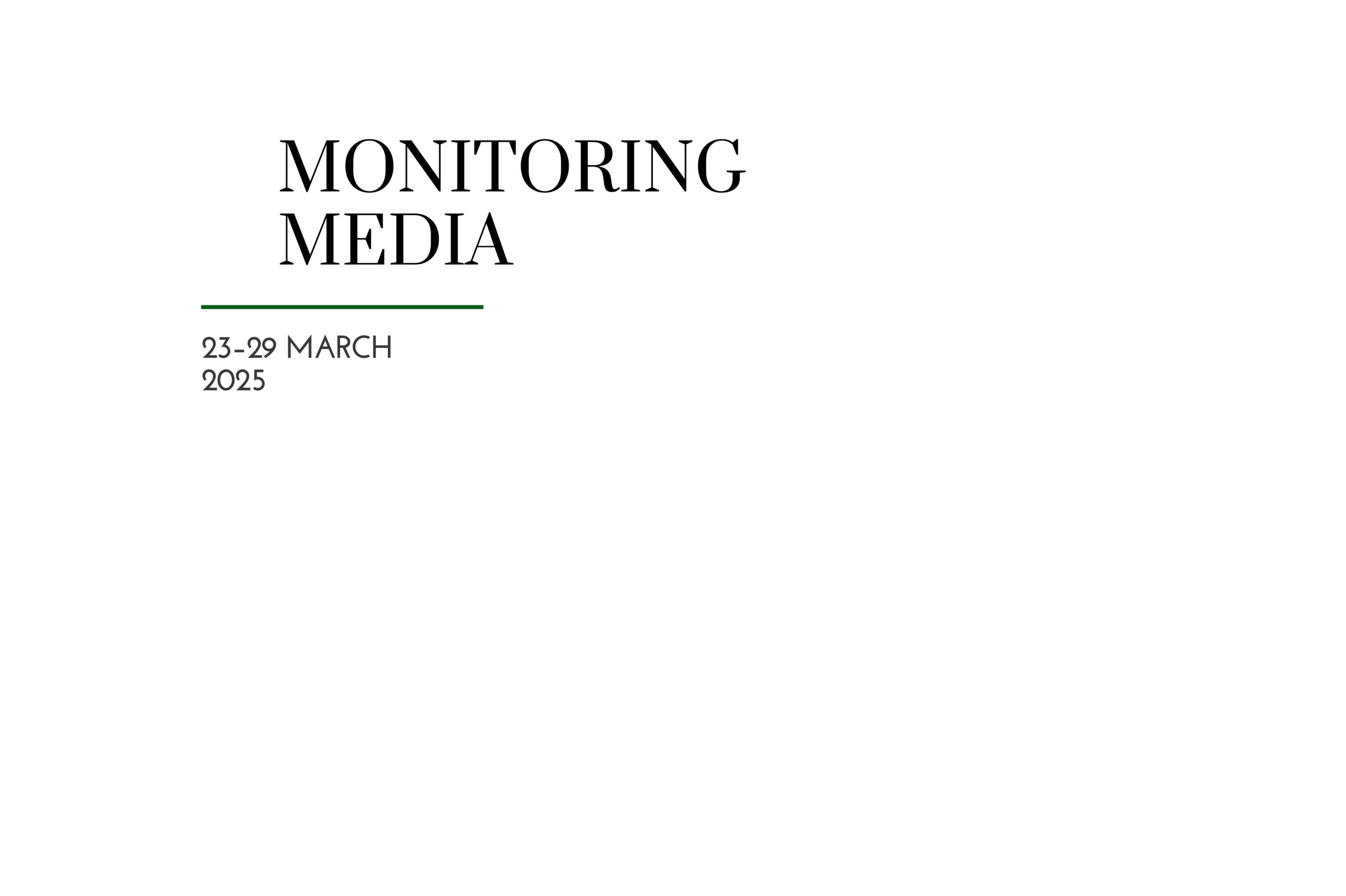
CIUS weekly report on North American media coverage of Ukrainian affairs, 23–29 March 2025
Five publications (Foreign Affairs, Foreign Policy, The Washington Post, The Wall Street Journal, and The New York Times) were selected to prepare this report on how Ukraine has been portrayed in the North American press during the past week. The sample was compiled based on their impact on public opinion as well as on their professional reputation, popularity among the readership, and topical relevance. These publications represent centrist viewpoints on the political spectrum.
This MMS report covers only the most-read and relevant articles about Ukraine, as ranked by the respective North American publications themselves in the past week. Its scope covers promoted articles on home pages and articles from special sections on Ukraine, with the hashtag #Ukraine, from the paper editions of the publications, and about Ukraine from opinion columns and editorials.
Featured topics
- The world and Ukraine: Europe’s help to Ukraine strengthens itself; US can help Ukraine without security guarantees; US could benefit from a peace agreement between Ukraine and Russia.
- Russia at war: Russia’s land policy in Ukraine’s occupied territories could determine the fate of the world; Kremlin sees opportunity in Trump’s policy shift to weaken Ukraine, reshape US ties.
MMS summaries
Europe’s help to Ukraine strengthens itself. Jack Watling (Foreign Affairs) argues that Europe should support Ukraine in its confrontation with Russia, despite the higher costs. The recent change in Washington’s foreign policy priorities was not a revelation to European capitals: “From his first days back in office, President Donald Trump has emphasized significant disagreements with the European Union, characterizing the bloc as inimical to US interests, while Vice President JD Vance argued at the Munich Security Conference in February that the values of the United States and Europe are diverging.” The content of European concerns changed dramatically when Washington tried to stop Russia’s war against Ukraine by putting pressure on Kyiv: “[President Trump’s] administration, meanwhile, has been unequivocal that there will be no long-term US commitment to Ukraine and has called into question whether US commitments in Europe will be honored.” The risk of another withdrawal of support from Washington forced Kyiv to reorient itself toward Europe. However, the question is whether European states are really able to replace the US. In the author’s opinion, it’s a mixed answer: “Europe has the latent capacity to produce much of the materiel that Ukraine requires to fend off Russia, but it has not prepared effectively to shoulder this burden. It can replace the United States as Ukraine’s primary security provider, but doing so will take time, require difficult collaboration, and be costly.” According to Watling, “Those hurdles are real, they are not insurmountable. Embarking on this undertaking, however, is likely to transform Europe’s relations with the United States.”
Russia’s land policy in Ukraine’s occupied territories could determine the fate of the world. Michael Albertus and Eugene Finkel (Foreign Policy) argue that any peace agreement between Ukraine and Russia that does not consider land policy in the occupied territories will be untenable. Territory control remains the main strategy for winning any conventional war: “Land confers immense economic, political, and social power to those who control it. Because land is central to livelihoods in the rural areas of eastern and southern Ukraine, and because the country’s fertile chernozem (black earth) is highly valuable for agricultural production, who holds that land—and how they hold it—determines who has political power.” Through violence, Moscow is trying to impose Russian law and governance in the territories it occupies in Ukraine: “In the occupied territories, Russian authorities are forcing people off their land, stripping them of their ability to resist the occupation, and requiring others to reregister their land in Russian land registries—with the threat of losing it if they fail to comply.” This approach is not new; Moscow has repeatedly used this approach to maintain control over Ukrainian territories: “This is also a familiar Russian strategy of dominating Ukraine, having been employed at times ranging from Russia’s imperial expansion during the 18th century to the heydays of Soviet leader Joseph Stalin’s collectivization, famine, and mass deportations in the 1930s–1940s.” According to the authors, any ceasefire that stops the fighting but does not solve the problem of Moscow’s land grab will make it impossible to describe Ukraine’s territory as simply ‘occupied’ by Russia. These fertile lands will allow Russia to increase its influence over the countries of the global south by supplying them with food. Western powers should recognize the danger and long-term impact of Russia’s land policy in occupied Ukraine and act accordingly. According to Albertus and Finkel, “Any future cease-fire agreement should thus prevent Russia from unilaterally changing land ownership policies in occupied Ukraine. The United States and European Union should not lift sanctions or normalize relations with the Kremlin while it continues to grab Ukrainian land. Ukraine’s partners and international bodies such as the World Bank should also work with Kyiv to monitor land ownership structures in the occupied areas and prepare the legal and administrative tools to mitigate the impact of Russia’s land policies if these regions return to Ukraine.”
US can help Ukraine without security guarantees. Robert B. Zoellick (Washington Post) insists that granting Ukraine access to $300 billion worth of frozen Russian assets would give Kyiv a stronger negotiating position. On the other hand, President Trump’s desire for a quick peace could lead to Ukraine’s capitulation. Moscow is playing along with Washington’s aspirations, while making additional demands that would lead to Ukraine’s collapse: “[President Putin] does not want to acknowledge a sovereign, independent, democratic Ukraine. Putin’s war is about much more than territory; he is fighting for Russian history and his place in it. President Zelensky of Ukraine understands that Putin will seek to subvert any so-called settlement.” Therefore, Kyiv is justified in demanding security guarantees. In the author’s opinion, “The United States, the European Union, Britain, Canada, Australia and other friends of Ukraine should transfer more than $300 billion of frozen Russian assets to a special fund set up for Ukraine. This sum would sustain Ukraine’s economy and military for years without costing Americans a dime.” The international law of countermeasures clearly justifies such a transfer, but Europe has blocked this decision because of its own concerns. However, Washington has the tools to make this decision happen: “Most of the Russian assets are in the Euroclear, a central securities depository in Belgium. But many of those assets are held in dollar securities and therefore are subject to U.S. supervisory authority, giving Treasury Secretary Scott Bessent leverage to push the Europeans.” Once Ukraine is reallocated the sequestered Russian funds, the US can provide Kyiv with weapons and intelligence without security guarantees, which will greatly enhance Ukraine’s defence capabilities. According to Zoellick, “Trump says he wants to be a peacemaker. The historian Tacitus wrote that Rome’s foes understood that its legions ‘make a desert and call it peace.’ The United States should not concede to a Russian peace of Ukraine’s destruction and submission.”
US would benefit from a peace agreement between Ukraine and Russia. Glenn Hubbard and Catherine Wolfram (New York Times) argue that Washington should introduce additional instruments of pressure on Moscow to put an end to Russia’s war against Ukraine. There is a simple step that would increase US pressure on Russia: “The administration should impose sanctions on any company or individual — in any country — involved in a Russian oil and gas sale. Russia could avoid these so-called secondary sanctions by paying a per shipment fee to the United States Treasury. The payment would be called a Russian universal tariff, and it would start low but increase every week that passes without a peace deal.” Secondary sanctions are a powerful tool of pressure, but they should be complemented by additional instruments: “Under our plan, a portion of each Russian oil and gas sale would be paid to the U.S. Treasury until Russia agrees to a peace deal. The goal is to keep Russian oil flowing to global markets but with less money going to the Kremlin.” In the authors’ opinion, such a move, aimed at undermining Russia’s energy revenues, would significantly limit its ability to wage an aggressive war against Ukraine and would fill the US treasury: “A fee of $20 per barrel of oil could generate up to $120 million per day (more than $40 billion per year), with additional revenue available if a similar fee is imposed on natural gas.” According to Hubbard and Wolfram, “Combining secondary sanctions, a strong tool in the US economic kit, with a tariff-like fee could pressure Mr. Putin by threatening his most valuable source of revenues. It would also make it easier for Mr. Trump to deliver on his promise of a lasting peace.”
Kremlin sees opportunity in Trump’s policy shift to weaken Ukraine, reshape US ties. Alexander Gabuev, Alexandra Prokopenko, and Tatiana Stanovaya (Foreign Affairs) outline how the Kremlin views U.S. President Donald Trump’s return to power as an unprecedented diplomatic opportunity, with Moscow eager to exploit his desire for a quick end to the war in Ukraine. Despite President Vladimir Putin’s restrained public tone, the Kremlin has openly welcomed the shift in Washington’s posture. After a two-hour call with Trump on 18 March, the Kremlin issued a statement expressing “gratitude to Donald Trump for his desire to help achieve the noble goal of ending hostilities.” In just two months, Trump’s actions—such as suspending military aid to Kyiv and echoing Russian disinformation—have delivered symbolic and material wins to Moscow. The authors argue that Trump has become increasingly aligned with the Kremlin’s narrative, noting that after his February call with Putin, he “began echoing Russian talking points, calling Zelensky a ‘dictator’ and fretting about corruption in Ukraine.” Meanwhile, Putin is maneuvering to secure a one-on-one summit with Trump that could result in a temporary ceasefire while embedding terms that severely weaken Ukraine’s long-term sovereignty and defence capability. The Kremlin’s ideal outcome is a deal that cuts off Western support for Ukraine’s military, allowing Russia to regroup and potentially resume its offensive once Trump leaves office. According to the authors, “Putin would be happy even if the Ukrainians and their European allies rejected the deal. Trump would then have a reason to permanently end U.S. support for Kyiv.” Moscow is dangling promises of broader cooperation—such as support for U.S. diplomacy with Iran and theoretical reductions in military budgets—to secure concessions. The Kremlin is also using personal connections, such as Kirill Dmitriev’s ties to Jared Kushner, to influence key members of Trump’s circle and portray a post-war U.S.-Russia partnership as mutually beneficial. Even if the talks fail, Gabuev, Prokopenko, and Stanovaya believe that the Kremlin remains confident it can outlast Ukraine. Russia continues expanding its manpower advantage, offering high recruitment bonuses and preparing another round of mobilization. The economy, while under pressure, remains stable due to strong budgetary management and increased military spending—$96 billion in just the first two months of 2025. The central bank’s 21% interest rate has kept hyperinflation at bay. Still, the authors caution that Ukraine’s resistance—supported by European allies and bolstered by growing domestic manufacturing—could yet stall Russia’s ambitions. But with Trump potentially undermining US-European coordination, “bright days may well be ahead—or so think the men in the Kremlin.”
Ukraine walks diplomatic tightrope as Trump pushes for rapid peace deal. Maksym Skrypchenko (Wall Street Journal) highlights Ukraine’s evolving diplomatic strategy under the Trump administration, stressing how Kyiv has had to adjust to a dramatic reversal of US foreign policy posture. Initially caught off guard by Trump’s election victory and unclear stance on Russia, Ukrainian officials struggled to align with the new administration. It became apparent that Trump “wasn’t particularly concerned with the intricacies of Russian aggression—he was wholly focused on achieving a peace agreement.” With guidance from British and French diplomats, Kyiv adopted a strategy of appearing cooperative while allowing Russia to be the first to reject any ceasefire proposals, Skrypchenko notes. This way, Ukraine could “avoid blame when talks inevitably fall apart,” protecting its image as a willing negotiator. However, Ukraine remains under intense pressure, as the success of its approach hinges entirely on Trump’s unpredictable diplomacy. European allies continue to offer support, but they cannot replace the scale of US military and intelligence assistance. Privately, they urge Kyiv “to avoid provoking the US or becoming an obstacle in Mr. Trump’s peace efforts,” especially as the administration’s demands are still unclear. Trump, presenting himself as an impartial broker in talks with both Zelensky and Putin, puts Ukraine in a precarious position—dependent on American support but vulnerable to being framed as a roadblock if it resists rapid concessions. “The key for Kyiv,” according to Skrypchenko, “is not to fall into the trap of becoming the obstacle to peace.”
